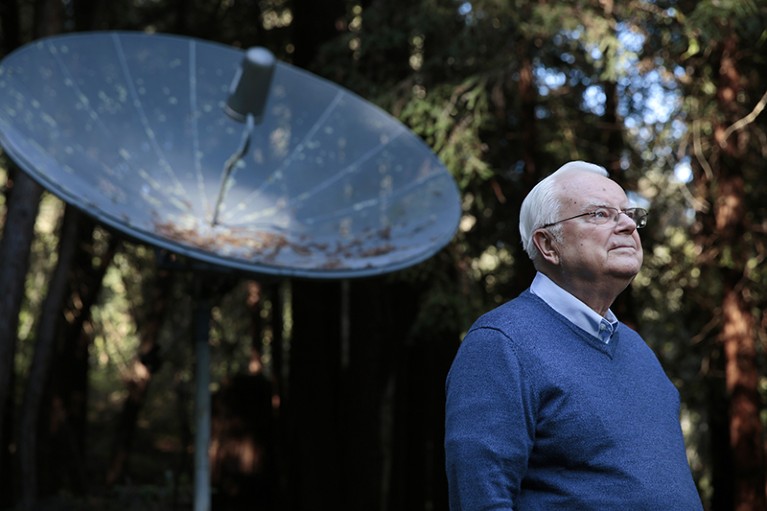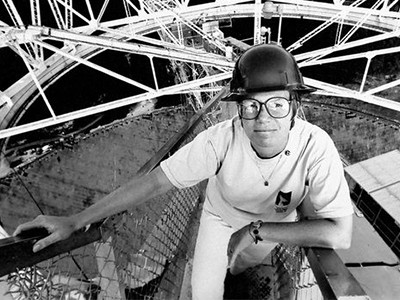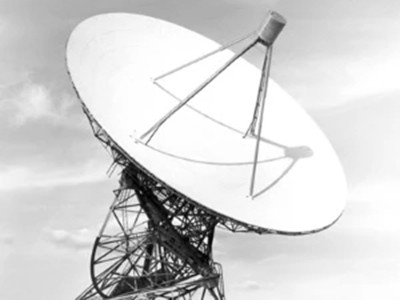
Credit: Ramin Rahimian for The Washington Post via Getty
Often called the father of SETI — the search for extraterrestrial intelligence — Frank Drake made the first attempt to detect radio transmissions from life beyond Earth in 1960. He spent decades advancing SETI’s technology and philosophy. Drake was collaborative and helped others to pursue a high-risk, fringe topic whose fruits he might not live to see. He helped to legitimize SETI and pushed humans to address the ultimate question: are we alone?
In 1961, Drake, who has died aged 92, led the first scientific workshop on the search for alien civilizations. To prompt discussion, he wrote on a blackboard several factors — such as the rate of star formation, the fraction of stars with planets and the chance that those planets harboured life. Multiplied together, these yield an estimated number of communicative, technological civilizations. Six decades later, this calculation — the Drake Equation — remains a scaffold for discussions in the field.
Drake was born in Chicago, Illinois. As a child, he often rode his bicycle to the city’s Museum of Science and Industry. He first wondered about extraterrestrial life at age eight, and rekindled his interest during an elective astronomy course at Cornell University in Ithaca, New York. One night, observing Jupiter, he saw not just the giant planet, but also its orbiting moons. Interviewed years later, he said, “It made the whole business seem very real.” He went to Harvard University in Cambridge, Massachusetts, for graduate work in the comparatively new field of radioastronomy, where he studied star formation and was the first to observe microwaves emanating from Saturn.
He once caught what seemed to be a signal from intelligent life coming from the Pleiades star cluster. It was actually interference from human technology, but the experience sparked an obsession. “Whenever I contemplated an instrument … I would as an aside ask myself, ‘Could this be used to search for life?’” he said. “The answer was always no, until we came to the modern radio telescopes.” Drake encountered his first such telescope at the then-new National Radio Astronomy Observatory in Green Bank, West Virginia, where he worked after graduation. While the observatory’s flagship instrument was being built, staff scientists purchased a 26-metre off-the-shelf antenna — the Tatel Telescope. Drake used it to map the galactic centre in detail, characterize Venus’s surface temperature, and demonstrate that radiation belts encircle Jupiter.
Drake thought the instrument could also look for life. It could detect an Earth-like civilization from 3 parsecs away, more than twice as far as our nearest star after the Sun, Alpha Centauri. With support from the observatory director, Drake designed a pioneering SETI experiment, called Project Ozma: a search for signs of intelligence around two Sun-like stars. The first day, Drake watched with hope. “Whenever you search for extraterrestrial intelligent radio signals, you always feel at the beginning that the signal may pop up right away,” he said. But Ozma ended two months later, with no affirmative results.
Word of Drake’s SETI prowess, however, led the US National Academy of Sciences to ask him to organize the first scientific SETI workshop, held in Green Bank. Drake could think of only a few relevant scientists, including himself, to invite. Most SETI philosophy that has followed bears the imprint of the Drake Equation, which he formulated at that event. SETI later struggled to attract federal funding, and Drake recalled that his colleagues were “positive but not enthusiastic” about his early efforts. “As long as no great demands were made on money or telescope resources, the people were willing to let you do anything you wanted, even if maybe it was crazy,” he said.
After first moving to the Jet Propulsion Laboratory in Pasadena, California, and then to a professorship at Cornell, he became director of the Arecibo Observatory in Puerto Rico. There, he continued standard radioastronomy work, including a focus on pulsars — the strong, periodic radio sources discovered by British astronomer Jocelyn Bell Burnell in 1967. But he always kept his interest in aliens. In the early 1970s, he co-designed (with astronomer Carl Sagan) the plaques, bearing pictorial messages to any beings that might intercept them, carried aboard NASA’s Pioneer 10 and 11 probes. In 1974, he led the composition of the Arecibo message, a radio transmission conveying information about Earth that was beamed to the star cluster M13. He supervised the Golden Record project, which carried human stories aboard the Voyager probes launched in 1977.
In 1984, Drake moved to the University of California, Santa Cruz. He went on to direct the Carl Sagan Center for the Study of Life in the Universe at the SETI Institute, a non-profit research centre in Mountain View, California, dedicated to all aspects of the Drake Equation, and to chair its board of trustees.
Drake was ambitious, but he was not competitive or attention-seeking. He assisted the SETI projects that grew from his early efforts. He was a team member on the PANOSETI Project at the University of California, San Diego, which searches for optical and near-infrared pulses, and sat on the advisory committee for Breakthrough Listen, which collects radio data using, in part, the Green Bank Telescope.
In these endeavours, Drake illustrated a willingness to engage with low-probability, high-consequence events. “I like to explore and find out what things exist,” he said. “And as far as I know, the most fascinating, interesting thing you could find in the universe is not another kind of star or galaxy … but another kind of life.” He showed Earth that SETI was possible and practical, and embraced the idea that the most fascinating science might not yield results in one person’s lifetime.



 Hunting aliens
Hunting aliens
 An alien concept
An alien concept







